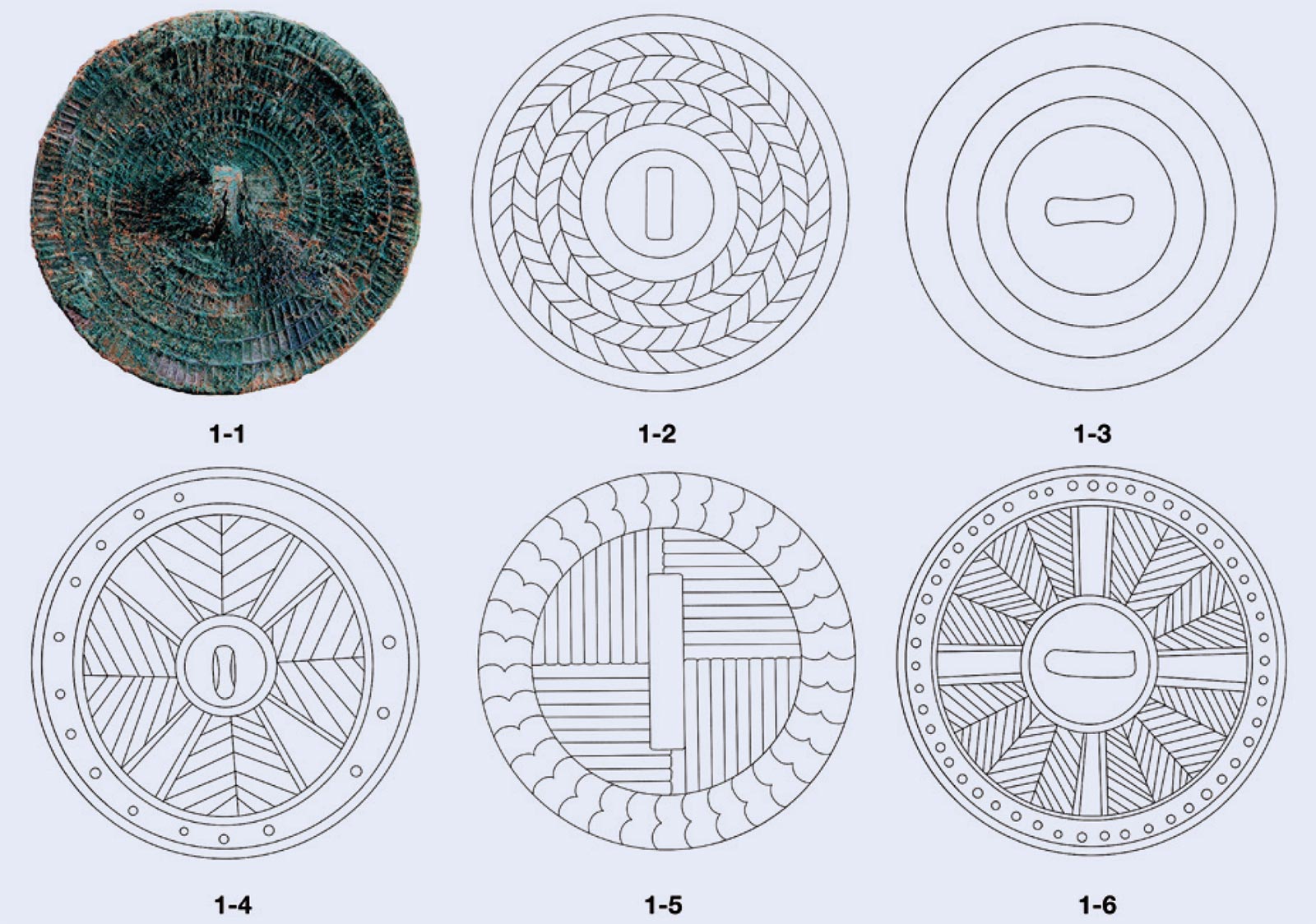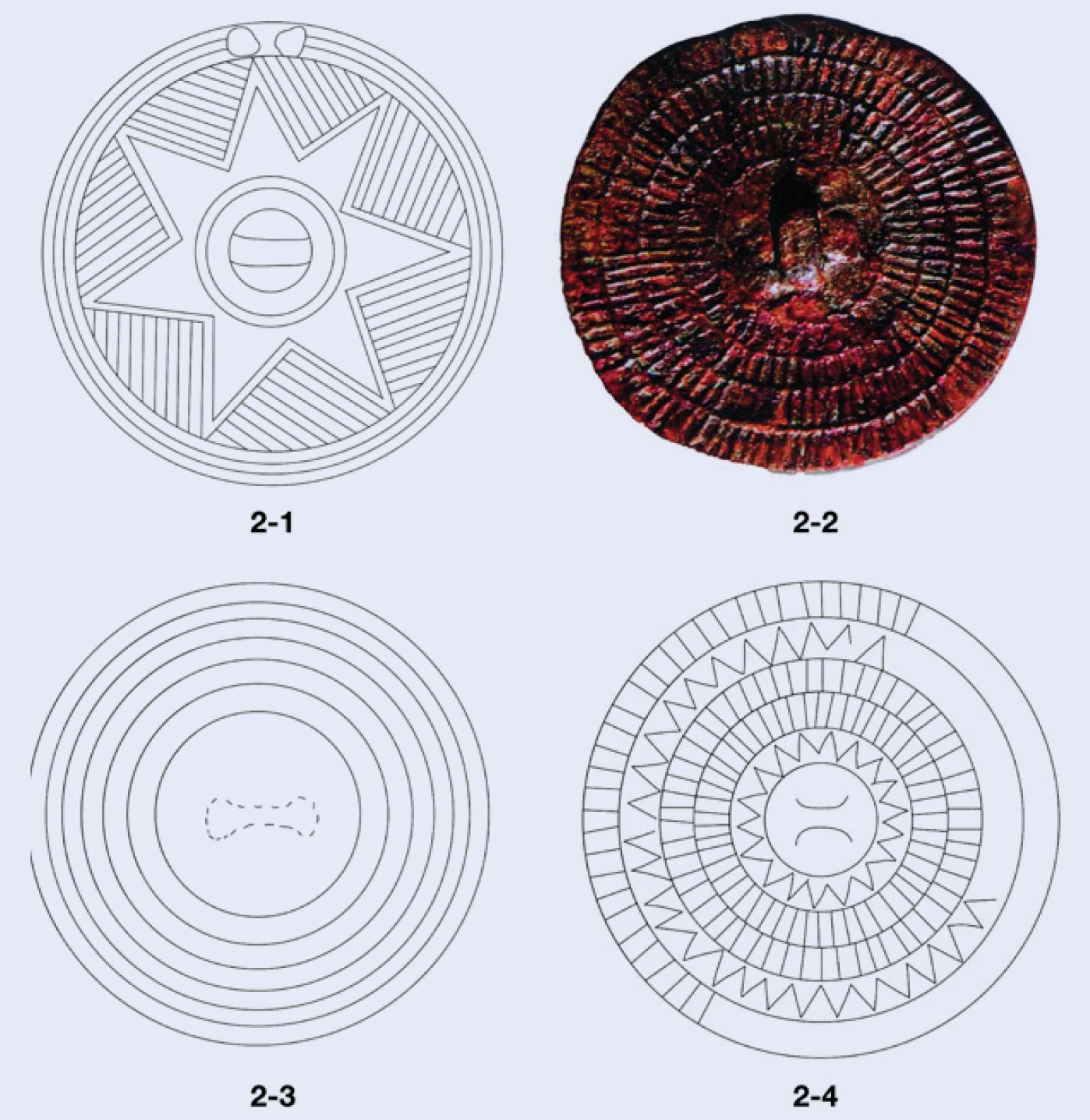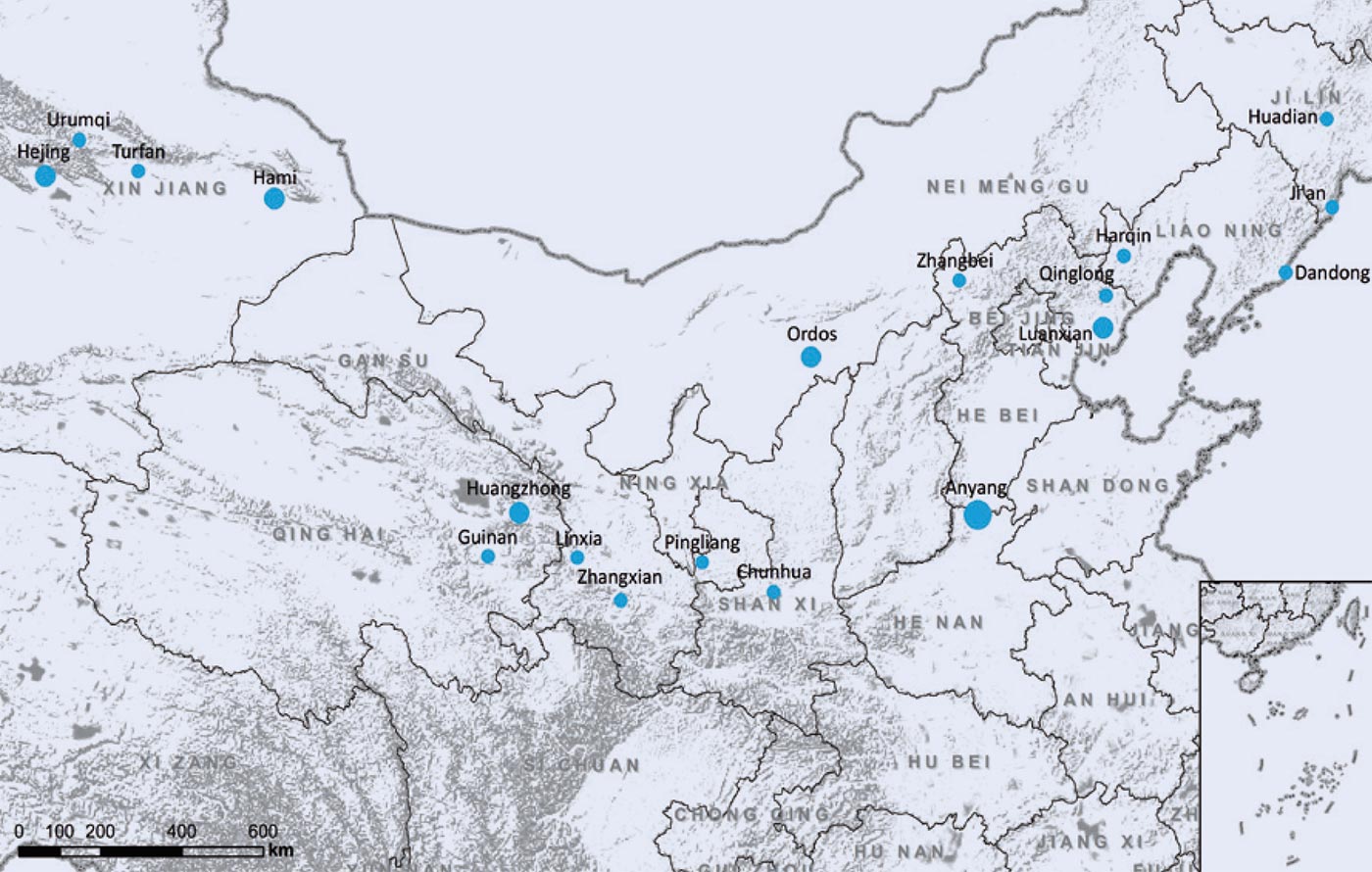Interregional transmissions of bronze mirrors with geometric decorations in early China
The bronze mirror has long been viewed as a quintessentially 'Chinese' object. However, the earliest mirrors discovered in the Central Plain are likely to have been imported exotica. This article draws attention to the geometric mirrors retrieved from Anyang, the last capital of the Shang dynasty. It argues that the style of the Anyang mirrors originated from the northwest borderland. Recent archaeological discoveries from the Inner Asian frontier further suggest that the early mirrors with geometric designs were embedded in the network of cross-cultural circulations between the Central Plain and its northern and western neighbors during the late second millennium BCE.
Later literary sources, such as the seventh-century fiction Record of an Ancient Mirror [Gujing ji 古鏡記], often ascribed the invention of the Chinese mirror to the legendary Yellow Emperor in antiquity. However, actual mirrors made of bronze did not emerge in the Central Plain until the Late Shang period during the thirteenth and twelfth centuries BCE. So far, only six mirrors (fig.1) have been unearthed from three tombs at the Late Shang capital Anyang, from which more than two thousand bronze vessels have been unearthed. Fu Hao, the female general and consort of King Wu Ding (c. r. 1324-1266 BCE), owned four of the six mirrors. The fifth mirror belonged to a low-ranking elite (Dasikongcun Tomb 25), while the last piece was associated with a burial of six human victims (Xibeigang Tomb 1005) accompanying the royal cemetery. Because of their scarcity and random social distribution, these mirrors were hardly status markers, but personal exotic items occasionally acquired from the outer world.
These six Anyang mirrors are decorated with simple and somewhat crude thread relief, in stark contrast to the ornate, multi-layered zoomorphic décor on contemporary bronze vessels. The mirror décor can be classified into two subgroups: one is comprised of concentric rings, sometimes filled with short lines; the other is divided into quadrants filled with parallel lines. Producing a small, circular disc with thread relief would require only two halved molds, much more straightforward than the sophisticated piece-mold casting technique already mastered by the Shang casters. The stylistic and technical distinctions between the Anyang mirrors and their contemporary bronze vessels suggest that the former were imported from elsewhere.

Fig. 1 1-1, 1-2, 1-4, 1-6: Mirrors from Yinxu tomb 5, Anyang, Henan, ca. 13th-12th centuries BCE. After Li Jaang. 2011. 'Long-Distance Interactions as Reflected in the Earliest Chinese Bronze Mirrors', in von Falkenhausen, L. & Brashier K. E. (eds) The Lloyd Cotsen Study Collection of Chinese Bronze Mirrors, Volume II, Studies. Los Angeles: Cotsen Occasional Press, UCLA Cotsen Institute of Archaeology Press, pp.40-41. Fig. 1-5: Mirror from Houjiazhuang tomb 1005, Anyang, ca. 13th-12th centuries BCE. After Kong Xiangxing & Liu Yiman. 1992. Zhongguo gudai tongjing 中國古代銅鏡. Beijing: Wenwu chubanshe, p.14. Fig. 1-3: Mirror from Dasikong tomb 25, Anyang, ca. 13th-12th centuries BCE. After Zhongguo shehuikexueyuan kaogu yanjiusuo Anyang gongzuodui. 1989. '1986 nian Anyang Dasikongcun nandi de liangzuo Yinmu' 1986 年安陽大司空村南地 的兩座殷墓, Kaogu 7:596. Tracings by Doris Yixuan Tang.

Fig. 2 (above right) 2-1: Mirror from Gamatai tomb 25, Guinan, Qinghai, 2300-1700 BCE. After Zhongguo qingtongqi quanji bianji weiyuanhui (ed.) 1998. Zhongguo qingtongqi quanji:di juan 16中國青銅器全集: 第16卷. Beijing: Wenwu chubanshe, p.1. fig. 2-2: Mirror from Hami, Xinjiang, 19th-13th centuries BCE. After Hami bowuguan (ed.) 2013. Hami wenwu jingcui 哈密 文物精粹. Beijing: Kexue chubanshe, p.89. fig. 2-3, 2-4: Mirrors from Houqianyi tomb 4, Luanxian, Hebei, 13th- 11th centuries BCE. After Houqianyi yizhi kaogu fajue baogao ji Jidong diqu kaoguxue wenhua yanjiu, p.40. Tracings by Doris Yixuan Tang.
As archaeological excavations in recent decades reveal, the two subtypes of geometric mirrors that predate the Anyang specimens already emerged in northwest China, including the two mirrors with radial triangles uncovered from the sites of the Late Neolithic Qijia Culture (2300-1700 BCE) in eastern Qinghai (Guinan; fig.2-1) and western Gansu (Linxia) as well as the three antecedents with radiating lines arranged in concentric rings found in Hami, eastern Xinjiang, dated from the nineteenth to the thirteenth centuries BCE (fig.2-2). The early evidence indicates the origin of the geometric mirror style in the northwestern periphery of present-day China.1

Fig. 3: Geographic distribution of mirrors with geometric patterns in early China. Courtesy of Yanlong Guo.
Rather than a direct long-distance movement across an area of several thousand kilometers, the transmission of geometric mirrors from the Inner Asian frontier to Anyang was likely an indirect process (fig.3). Several mirrors with radiating lines arranged in concentric circles, including three chance finds in Qinghai and Gansu and one specimen scientifically excavated from western Shaanxi, indicate the western route. Meanwhile, the steppe route seems equally possible. Archaeologists have reported at least four chance finds of analogous mirrors in the Ordos region of Inner Mongolia. The geometric mirror style traveled further east through southern Liaoning and northern Hebei before finally reaching the Shang territory. The most noticeable are the two mirrors (figs. 2-3, 2-4) recently unearthed from a Late Shang tomb (Houqianyi Tomb 4) in Luanxian, Hebei,2 whose owner, a local male elite, had direct access to bronze objects from both the Shang and the northern frontier. The geometric mirrors were embedded in the network of cross-cultural circulations between the Central Plain and its northern and western neighbors during the late second millennium BCE, even though they remained occasional and failed to stimulate Shang artisans to cast their own mirrors.
Yanlong GUO is an Assistant Professor of Art at Smith College yguo@smith.edu